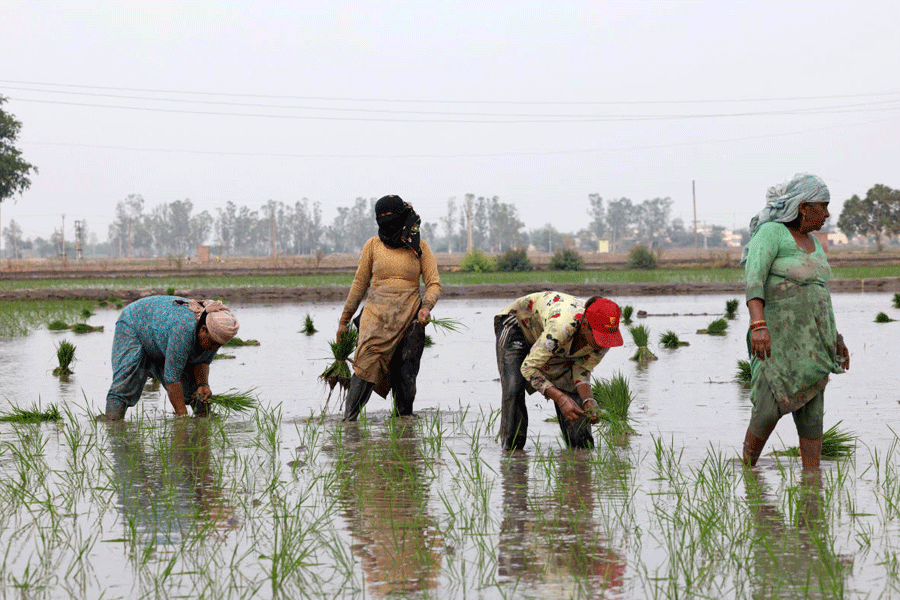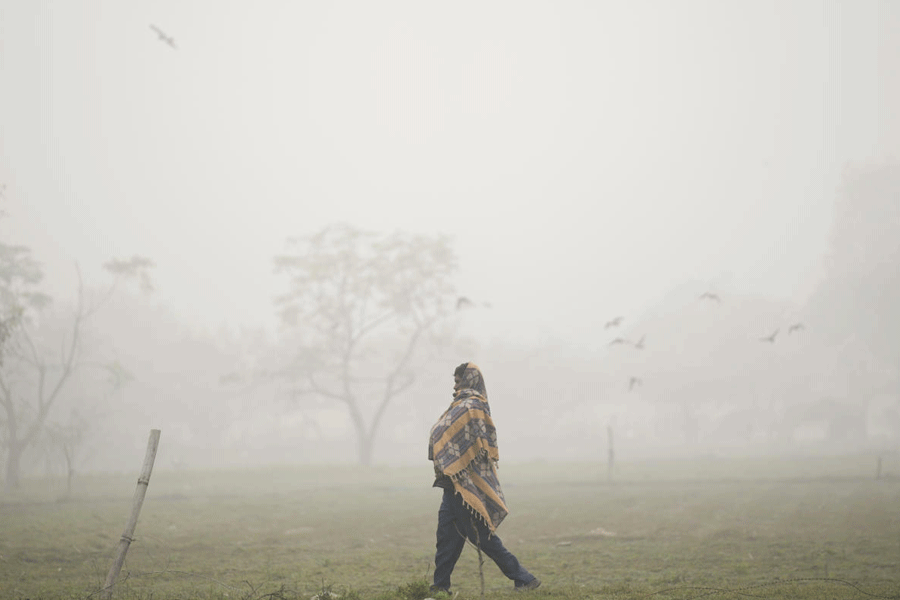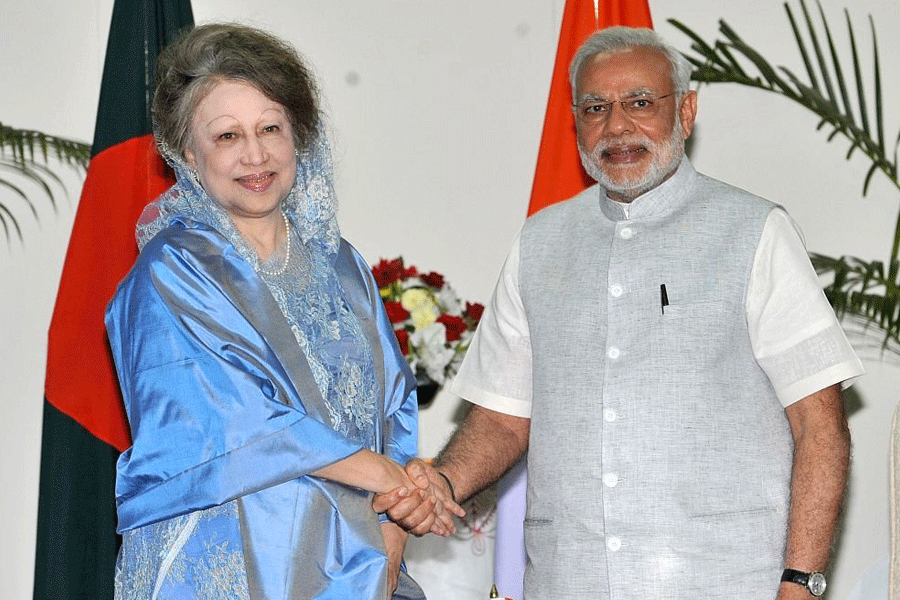 |
| Alpana decorations are an intrinsic part of the puja decor. A Telegraph file photo |
A green suit for Ashtami, a peasant skirt and kurta —conforming to the latest fad “the Vidya Balan look”— for Nabami and a traditional red and white sari, still a rage among the young and old alike, thanks to Sanjay Bhansali, for Dashami. With Durga puja just round the corner, this is what women want. But the one thing you can improve on, apart from matching your accessories to your outfits is — floor décor. Suchi Arya finds out.
All about alpana
Also known as rangoli, kolam or aripoma, alpana is a ritual painting which is done on auspicious days such as Lakshmi puja, Durga puja, Diwali and even on Bengali weddings. The word is said to have originated from the Sanskrit word “alimpana”, which means “to plaster or to coat with”.
Although it is difficult to determine the origins of the art, it is believed that alpana was practiced during the pre-Aryan times.
The ritualistic and traditional folk art of Bengal has also been associated to the early agricultural communities. It is said, the farmers would make alpanas as it would help them drive out negative energy and increase their annual produce.
Symbolically speaking
A stereotyped geometric symmetry defines the style of this ritual painting, most of which has been handed down over generations.
Many patterns also have a symbolic meaning associated with them. For example, a circular alpana symbolises a holy pedestal used for deity worship, similarly, the motif of a woman’s feet at the doorstep entering the premises, is associated with Lakshmi, the goddess of wealth. Other common motifs, which are used, include the sun, rice, plough, fish, lotus, domestic animals and floral patterns.
Expert’s exercise
For making an alpana, one would require either khari mati (which has a high content of calcium) or chalk powder.
Traditionally, aatop chaal (rice) is used for this purpose; however, this practice has seen a decline after the availability of easy-to-use supplements such as watercolours and plastic paints. Water is added to any of these ingredients to make a thick paste. First timers could use a cotton-bud to make the pattern and it is advised to chalk out a rough design before painting the pattern. The thicker the mixture chances are that the patterns will come out better. The trick is to get the right consistency.
Words of wisdom
Mashima (the Bengali version of agony aunt!) says a bath is advisable before making the alpanas and the floor should be thoroughly cleaned.
Alpanas should be made at the entrance and near the pratima (idol). It is best to avoid making a swastika and other religious symbols at the entrance, as it is considered inauspicious to step on them.
Other options
According to tradition, chandoa, a silk cloth, is placed above the pratima. Most preferred colours for a chandoa are red and orange.
A wooden frame called chaalchitra is also placed behind the pratima. Originally, the chaalchitra is made of shola but nowadays, fancy coloured-paper is also used.
It is important to have a painting of Lord Shiva on the chaalchitra as it is believed that since Durga is visiting her parent’s house she should carry a picture of her husband.
Shora, a clay saucer, is traditionally used as a decorative wall hanging to paint pictures of gods and goddesses. Remember to paint a white base and then follow it up with your art work. Am patta and flowers are also considered auspicious for pujas, so don’t forget to buy yourself a fresh stock.
(The above mentioned items are available at Dashkarma Bhandar at Jhanda Chowk (Sakchi) and Sakchi Masala Patti and Basak Stores and Masala Patti in Bistupur market)











